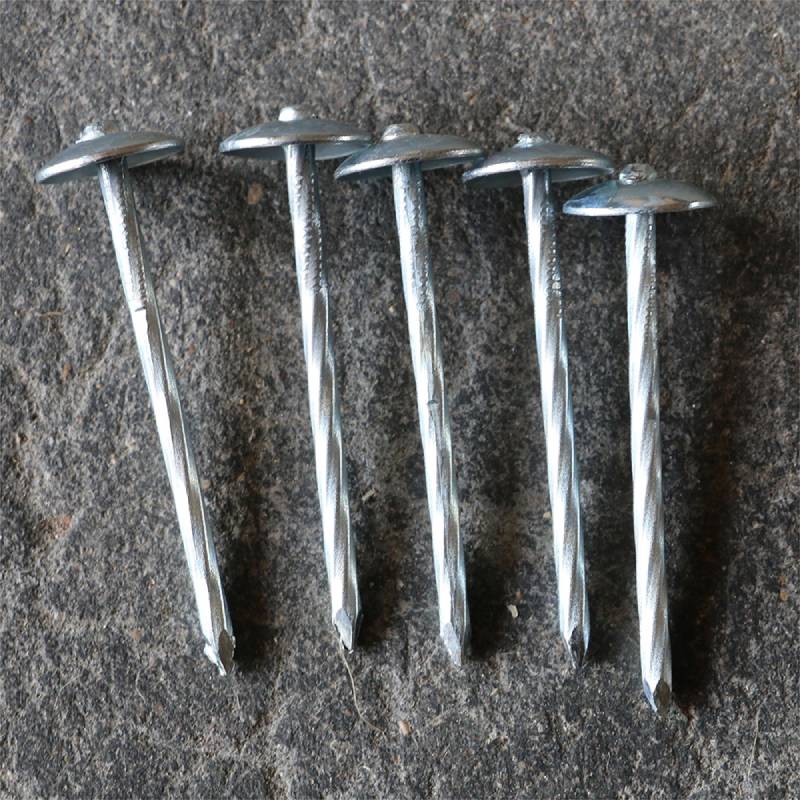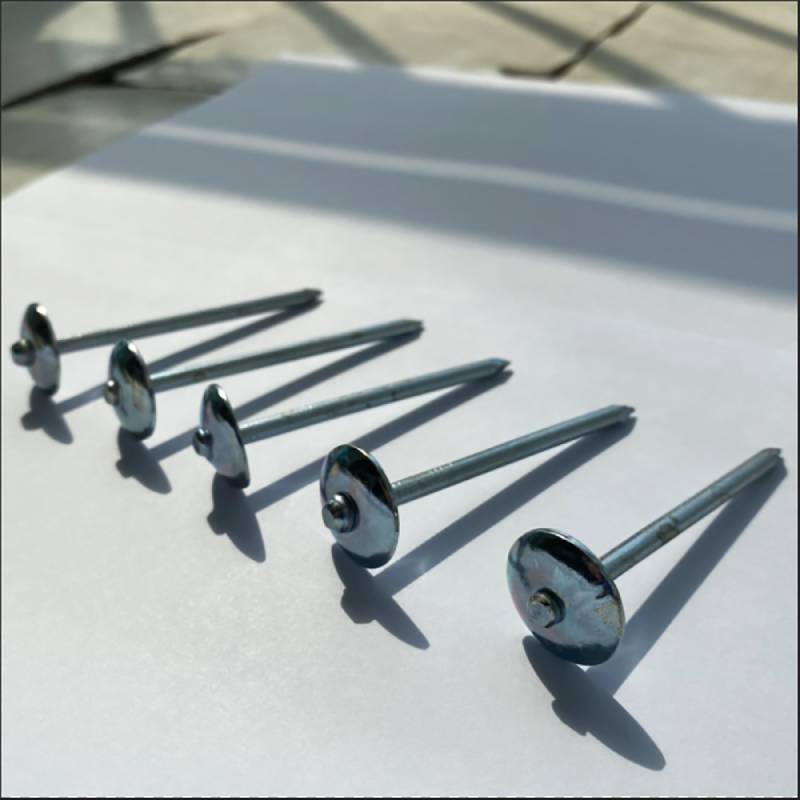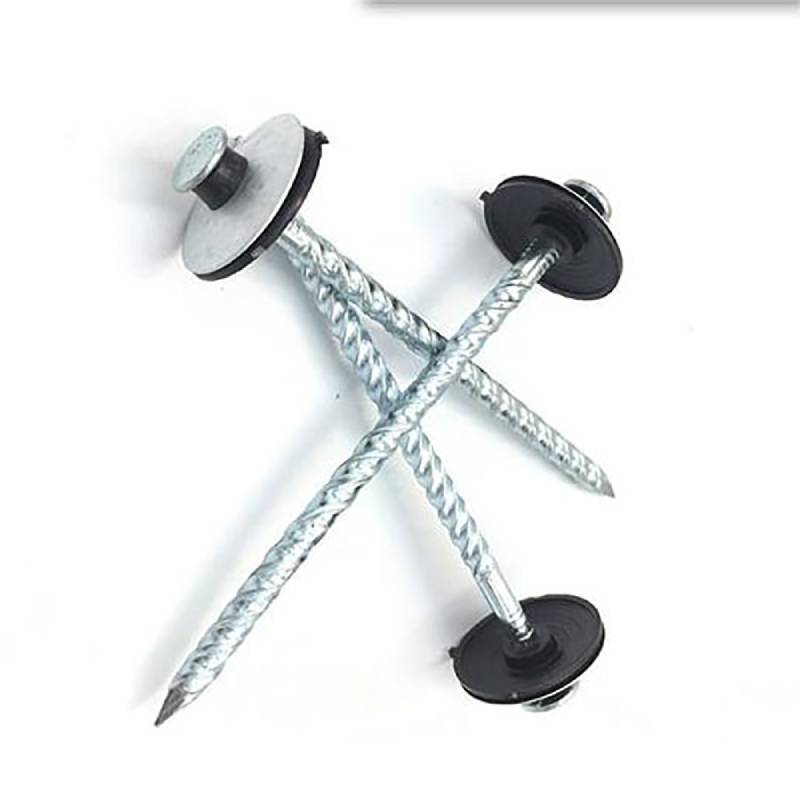Roofing Nails: Durable Corrosion-Resistant Options for Longevity

Roofing nails form the critical foundation of durable roofing systems. As roofing technology evolves, these specialized fasteners have developed into precision-engineered components essential for weather resistance, structural integrity, and longevity. This comprehensive guide examines key variations including galvanized roofing nails, hot dipped roofing nails, electro galvanized nails, umbrella nails, and stainless steel roofing nails, analyzing their performance characteristics through technical data and industry research.
Technical Specifications: Roofing Nails Comparison
| Nail Type | Material | Corrosion Resistance | Coating Thickness | Optimal Gauge | Typical Length (in) | Shear Strength (lbs) | Ideal Roof Slope |
|---|---|---|---|---|---|---|---|
| Electro Galvanized | Steel | Moderate | 0.0002"-0.0003" | 11-12 | 1-3 | 240-310 | 4:12+ |
| Hot Dipped Galvanized | Steel | High | 0.0015"-0.0027" | 11-12 | 1.25-3.5 | 250-320 | All slopes |
| Stainless Steel | 304/316 SS | Exceptional | N/A | 10-12 | 1.5-4 | 300-400 | Coastal regions |
| Umbrella Nails | Galvanized steel | High | 0.0018"-0.0025" | 12 | 1.25-1.75 | 180-250 | Low slope |
Performance Data Visualization
Data sourced from NRCA Technical Bulletins & ASTM F1667 standards
Premium Roofing Nails by IronWireFactory

Our premium roofing nails are engineered for durability and reliability, providing the essential foundation for roofing projects. Manufactured with precision, these nails are designed to offer superior holding power and resistance to weathering, ensuring your roofing materials stay secure in various environmental conditions.
- Advanced corrosion protection technology
- Precision-formed heads for leak prevention
- Optimized shank designs for maximum withdrawal resistance
- Manufactured to ASTM F1667 standards

Professional FAQ: Roofing Nails Technical Considerations
What distinguishes electro-galvanized from hot-dipped galvanized roofing nails?
Electro-galvanization applies zinc through electrolysis (typically 0.0002-0.0003" thickness), suitable for normal conditions. Hot-dipped galvanized roofing nails undergo immersion in molten zinc (0.0015-0.0027" coating), providing superior protection in harsh environments per ASTM A153 specifications.
When should stainless steel roofing nails be specified?
Stainless steel nails (Grade 304/316) are essential in coastal regions, chemical processing areas, and environments with pH extremes. Their chromium-nickel composition provides chloride resistance that exceeds zinc-coated options by 5-7x according to NACE corrosion studies.
What's the functional purpose of umbrella nails?
Umbrella nails feature specially designed heads that create watertight seals around fastener penetrations. Their broad, concave heads with sealing washers prevent moisture intrusion at critical connection points in low-slope roofing assemblies.
How does nail gauge affect roofing performance?
Gauge determines nail stiffness and load capacity. Standard 12-gauge roofing nails (0.109" diameter) provide optimal balance, while 11-gauge (0.120") offers increased withdrawal resistance for high-wind regions per IBC wind load calculations.
What coating standards apply to hot dipped roofing nails?
Premium hot-dipped nails comply with ASTM A153 Class D coating requirements, guaranteeing minimum 3.9 mils (0.0039") zinc coating thickness on round wire nails over 1" length. This provides 3-5x greater longevity than standard electroplating.
How does climate affect roofing nails selection?
Coastal areas require stainless steel for salt resistance. High-moisture regions benefit from hot-dipped galvanized. Extreme temperature fluctuations necessitate nails with thermal expansion coefficients matching roofing materials to prevent fastener pop-out.
What safety factors should be considered in nail spacing?
NRCA guidelines recommend spacing roofing nails 6-12" apart depending on material and wind load requirements. Critical perimeter zones require 50% increased fastener density to resist uplift forces calculated per ASCE 7 wind load provisions.
Industry Standards & Material Science Research
"Advanced zinc-aluminum alloy coatings demonstrated 8-10x greater corrosion resistance than conventional galvanization in accelerated weathering tests simulating 30-year exposure. These next-generation coatings represent a significant advancement in roofing fastener technology." - Journal of Building Materials Science
"The NRCA Roofing Manual specifies stainless steel or hot-dipped galvanized fasteners for all critical roofing applications in environments with >50 ppm salt content. Our field studies showed electro-galvanized fasteners failed within 7 years in these conditions." - NRCA Technical Bulletin #47
"Withdrawal force testing of modern ring-shank roofing nails demonstrated 400-450 lbf capacity compared to 250-300 lbf for smooth shank equivalents. This mechanical interlocking significantly enhances wind uplift resistance." - ASTM Research Report F1667-19
Contact Our Engineering Team
For technical specifications sheets and project-specific fastener recommendations:
- Phone: +86 0311-85379611
- Mobile: +86 0311-85379611
- Email: info@wirenetting.com.cn
- Address: Heng Shui ZhengXuan Industrial Zone, AnPing, HengShui, HeBei, China
- Product Page: Roofing Nails Specifications
-
Space-Saving Chain Fence Hacks Vertical Gardening with Cyclone MeshNewsJul.16,2025
-
Innovations in Iron Nail Wire Production for Modern ConstructionNewsJul.16,2025
-
Creative Uses of Wire Netting Fence in Modern Landscape DesignNewsJul.16,2025
-
Barbed Wire Fence Innovations in Anti-Climb TechnologyNewsJul.16,2025
-
Architectural Uses of Umbrella Nails for Aesthetic Roof DesignsNewsJul.16,2025
-
Architectural Uses of Razor Barbed Wire in Secure Urban DesignNewsJul.16,2025




